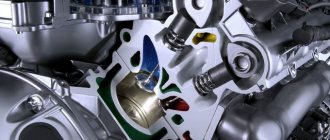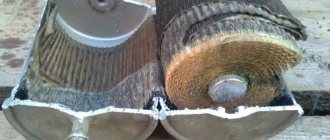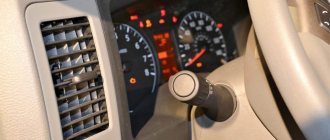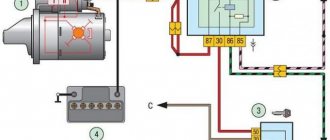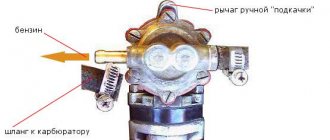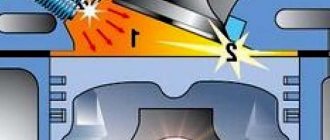Every owner of an Oka car has at least once encountered a situation where the engine does not start. Most problems appear in winter rather than in summer.
What to do in such cases? How to quickly eliminate the main cause of a malfunction? This article will talk about various reasons why the Oka does not start and how to solve them.
Oka was produced for the first time in the Soviet Union at the Volzhsky plant. The car is classified as a passenger car. In total, about 700,000 copies were produced from different factories in Russia. Experts carefully tested the cars before they went on sale. They have been tested for stability, comfort, power and endurance in a variety of ways.
The main reasons why a car won't start
If the Oka does not start, then, first of all, you should study the symptoms that appear. First of all, determine whether the starter turns. If it turns, what are its characteristics - does it work poorly, are there any sounds, and so on.
If necessary, you can try to start the car several times. If it does not turn over, then there are two reasons: a faulty starter or problems with the battery. In the first case, you need to contact a service station, and in the second, charge the battery, if possible, or change it altogether.
Some models have special protection in their design - a fuse. Finding it will not be difficult even for the most inexperienced driver. If the problem is a low battery, then the vehicle's electronics will not function fully. The most common case is terminal oxidation. To eliminate this, it is necessary to clean the terminals from dirt and oxidation elements. After this, you should carefully tighten the terminal fastening.
If there is a problem with the battery being completely discharged (for example, the headlights were on all night), it should be charged, unless we are talking about lead batteries. In the winter season, there are often frosts in many regions of our country. The car should be especially taken care of during this period. Many Oka owners take the battery home with them. Thus, being in a warm room, it will not discharge and the car will start without problems in the morning.
Cooling system
The job of cooling is to maintain a stable temperature in the engine. The system consists of several nodes. The main problems with lack of cooling are as follows:
- Presence of cracks in the pipes.
- Unstable thermostat operation.
- Pump malfunction.
- Radiator honeycomb clogged.
- Unstable operation of the temperature sensor.
When the pump fails, uncharacteristic sounds appear in the engine. Traces of oil leaks are also formed. This problem can be solved by replacing the cooling system.
Clogged radiator honeycombs lead to improper heat exchange operation. Because of this, the engine may overheat greatly and subsequently not start at all. The situation can be corrected by thorough washing. However, if this does not help, then the elements of the cooling system are replaced.
The main reasons why there is no spark
- problem with spark plugs (flooded or faulty);
- breakdown of high-voltage wires or loss of contact;
- the reason is the crankshaft sensor (requires checking with a multimeter);
- malfunction in the ignition module;
- failure of the ignition coil;
- problem in the switch;
- Distributor malfunction (burned contacts, loss of clearance);
- poor ground wire contact;
- failure or malfunction of the ECU;
Increased fuel consumption
– check the diaphragm of the fuel pump - its damage leads to gasoline entering the engine crankcase;
– tighten all clamps and threaded connections of the fuel system;
– check the vehicle's driving resistance. A VAZ-1111 at a speed of 50 km/h must cover a distance of at least 500 m before stopping. If this does not happen, then check the pressure in the wheels, the angles of the front wheels and the operation of the brake system (it may be jammed);
– adjust the carburetor, check the throttle valve, jets, needle valve;
– possible wear or damage to valves and piston rings.
Specifications
Universal body parameters help position the car in any parking space. The minimum dimensions of the car contribute to this, namely:
| Width | 1.420 mm |
| Length | 3.200 mm |
| Height | 1.400 mm |
| Turning radius | 4.6 meters |
| Wheel base | 2.180 mm |
| Rear track | 1.200 mm |
| Front track | 1.210 mm |
| Clearance | 160 mm |
Ignition system problems
Ignition involves supplying a spark using spark plugs to ignite the fuel mixture. If the problem lies in this system, then you can detect unstable operation of the engine (due to the fact that 1 or more cylinders are not working) and a decrease in energy.
It is recommended to check the spark plugs from time to time. There may come a time when the candles have already failed. Then the car will not start due to problems with the engine. The situation can be corrected by replacing all existing spark plugs.
Equilibrium mechanism
This mechanism is designed to reduce strong engine vibration. The design is quite strong and reliable. The main failure is a broken gear. The situation can be resolved by replacing the toothed disc.
As a result, it should be said that most of the above situations can be avoided if quality maintenance is carried out on the car and, in particular, the engine. The Oka is considered a rather capricious machine, so it is recommended to constantly monitor and care for it so that it is always on the move and helps out at the right time.
Main signs of malfunction
Each car has its own specific signs of malfunction. However, in most cases they are all quite similar to each other. The main reasons include the following:
- the engine does not work or works poorly;
- sensations of strong vibrations;
- strong heating of the motor;
- unnecessary, loud sounds when turning on the engine;
- the presence of interruptions and instability in the operation of the internal combustion engine;
- the engine “troits” (malfunction);
- The carburetor is firing.
The smell of gasoline
– check the threaded fasteners and clamps on the fuel system hoses;
– inspect the oil dipstick; if there are traces of gasoline on it, then gasoline may be entering the engine crankcase through a faulty fuel pump diaphragm;
– adjust the carburetor trigger;
– check the gasoline level in the float chamber;
– tighten the fuel jets tightly;
– adjust the ignition timing;
– inspect the throttle valve, it may be jammed;
– use a compressor to check the pressure in the cylinders. The smell of gasoline can be caused by wear of valves, rings, seats and other elements.
Answers (4)
Check the battery charging, that is, the battery itself, as well as the spark plugs, armor wires, and ignition coils.
if the reason is not in the spark plugs, armor plates, battery, then perhaps in the fuel pump
check if there is spark? that is, are the coils, spark plugs and BB wires ok? and a fuel pump! carburetor, if carburetor version
Check the ignition adjustment, if the ignition is on the marks, then do it a little earlier, but so that when you sharply press the gas pedal, the piston pins do not knock / adjustable by ear, using scientific poking /. Check the compression in the engine cylinders with a compression meter, it should be at least 8 units, if less, the piston is worn out, there is not enough compression in the engine cylinders, so it won’t start when cold, or it starts poorly and with suction even in the summer.. Check the spark plugs, they should be clean without carbon deposits, if they have black carbon deposits on them, there are many reasons 1. rich fuel mixture - reason, air filter is clogged/change/, carburetor is clogged/disassemble, wash, blow with a compressor or pump/. 2. Late ignition/adjust/. 3. The candles have the wrong heat rating. 5,The ignition coil does not supply the required current to the spark plugs/install a working one/. 6. The timing valves/gas distribution mechanism/are tightened, there is no clearance. 7. The capacitor does not work correctly / if the ignition is not electronic /, replace it or add a second one to it - it’s more reliable. These could be the reasons, and it is advisable to look for them with an experienced driver or mechanic. You can also drive it to a service center, but experienced swindlers work there /if you don’t know anyone/, they can even find something that doesn’t exist and didn’t exist, everyone needs money.
Supply system
This component ensures the supply of fuel and air, preparation of the air-fuel mixture and filling of the cylinders with it. The key component of this system at Oka is the carburetor.
Malfunctions of the power system manifest themselves in the form of:
- Inability to start the engine;
- Business interruptions;
- Reduced engine power and response;
The cause of such malfunctions is the lack or supply of insufficient fuel, as well as severe clogging of the air filter or air leaks.
If gasoline is not supplied to the carburetor (you can check this by disconnecting the gasoline supply pipe from the carburetor and pumping fuel by manually pumping the pump), you should check the condition of the pipelines for leaks, as well as the condition of the membranes of the gasoline pump and fine filter. Sometimes, to eliminate the cause of the lack of gasoline supply, it is enough to simply unscrew the tank cap (if the atmospheric channel in it is clogged, a vacuum will be created in the tank, which will prevent the pump from pumping gasoline).
If fuel is supplied to the carburetor, we check the unit itself. It contains many channels of small cross-section, the blockage of which leads to the impossibility of starting the engine or interruptions in its operation. Flushing the carburetor and purging its channels often solves the problem, if, of course, it was related to the power system.
Failure of the idle speed solenoid valve, rupture of the starter membrane, incorrect idle speed adjustment , air leakage through the vacuum booster fitting or the gasket between the carburetor and the intake manifold are the reasons for unstable engine operation.
RPM drops on a hot engine
Try adjusting the mixture formation for XX: 1. First of all, check the XX jet (under the solenoid valve). The slightest clogging of it leads to unstable operation of the engine at idle. Just blow it thoroughly or clean it with a thin copper wire. It is likely that your problems may end here 2. Start the engine and warm it up; 3. Turn on powerful energy consumers - high beam + heated trunk glass + something else; 4. If the engine has significantly reduced speed and begins to shake, increase the speed with the XX quantity screw; if not, immediately proceed to the next step; 5. Using the mixture (quality) screw, reduce the XX speed (LEAN MIXTURE, the benefits of which DARKCORP wrote) until signs of unstable operation appear (the engine begins to twitch and wobble), from this position of the quality screw, turn it in the opposite direction to 1/8. 1/4 turn; 6
Carefully unscrewing the mixture quantity screw, increase the idle speed until the engine operates stable. 7
Now turn off the electrical load. The XX speed may increase after this. 8. Estimate the crankshaft rotation speed (preferably, of course, using a tachometer, if you have one). If everything worked out well, then when the electrical load is turned on, the idle speed should not be lower than 800. 900 rpm, and when turned off, it should not be higher than 950. 1100 rpm. The best thing is if the idle speed floats in the range of 850. 950 rpm when turning off. turning off the load. 9. If the revolutions do not fit into the specified intervals, repeat the XX settings, starting from step 2. And so on until you achieve the result.
This is, so to speak, a prescription for treatment “by ear and eye,” but it is quite effective in solving your problem.
You can set up XX “according to science” - it has been chewed here many times in different versions and is given in various Murzilkas, Kama Sutras and other manuals. But, remember, this way and that - the XX adjustment must be done at: - at a normal fuel level in the float chamber; — clean jets; — there should be a clean (preferably new) air filter in the pan; — adjustments MUST be done with power consumption ON.
After this, in traffic jams you will stop stalling only when the Carlson turns on. Of course, the carburetor and pan can become saturated with gasoline vapors and the mixture will become so rich that the engine will stall, but we still reduced the likelihood of this by leaning the mixture when setting the XX.
How to deal with gasoline vapors is another story.
Source
Causes
The main reasons for this situation lie in the following motor components:
- fuel supply or ignition is stopped;
- the gas distribution mechanism adjustments have gone wrong;
- There was a breakdown of internal parts of the power unit.
Thanks to modern electronics, before a final breakdown, an alarm signal is displayed on the dashboard, which informs the driver about possible problems. At the first signal, it is worth immediately carrying out diagnostics and eliminating the malfunction at the initial stage.
If this is not done, then you can only wait for future problems, in which the engine suddenly stalls while driving, after which it does not start.
Irregularities in the fuel system
The operation of the Oka fuel system is to ensure that the mixture is supplied along with air and fills all cylinders with it. An important component that is responsible for the serviceability of this system is the carburetor. How can you identify problems with the fuel system?
The main reason for these problems is severe contamination of the air filters and lack of fuel mixture. If there is no gasoline supply to the carburetor, then first of all it is recommended to check the condition of the fuel pump, pipes, and cleaning filters for damage.
In some cases, it is very simple to correct the problems of poor fuel mixture supply. You should remove the cap from the fuel tank and look at the channel for blockages. If they are present in the tank, there will be a weak thrust for pumping fuel.
In the opposite situation, if fuel enters the carburetor, then the unit should be checked. It includes a large number of small channels, the blockage of which will lead to the inability to start the engine. Nevertheless, it is quite possible to solve this problem. The process of cleaning the carburetor and blowing through all channels will help resolve the situation.
Cylinder-piston group
This component of the engine is directly involved in the processes taking place in the cylinders.
Its main malfunction is wear of the rings, as a result of which compression drops, as a result of which engine power decreases, fuel consumption increases, and some of the oil goes to waste. An additional sign is a muffled knock in the engine , clearly audible at low speeds. Installing new rings can solve the problem several times, but eventually you will have to make a cap. repair with CPG of repair sizes.
Less common breakdowns:
- Destruction of rings;
- Melting of the edges of the bottom;
- Piston burnout;
These malfunctions are the consequences of disruptions in the operation of other engine mechanisms and systems. Such breakdowns are eliminated by major repairs.
How to start a car in winter
If the Oka does not start when cold, you should perform several actions:
- Carefully turn the ignition key to turn on electrical appliances.
- Take a break of a few seconds to allow all systems to prepare to turn on the engine. After this, you should turn the key all the way and hold it for no more than five seconds. If the Oka does not start and stalls, then you need to wait about a quarter of a minute and start the engine again.
- You can easily understand that it has started (by sounds and vibration). In the frosty season, it is recommended to turn the key to the indicator that electrical appliances are turned on and wait about a minute. Then turn on the ventilation, and then press the gas pedal about three times. The colder the engine, the longer it will take to start. The ventilation system does a great job of “waking up” the car, and pressing the gas pedal will clear the carburetor of excess gasoline.
Preparing the walk-behind tractor for start-up
In the instructions, manufacturers always indicate how to start the walk-behind tractor correctly. However, not everyone wants to waste time reading long pieces of paper and start work without familiarizing themselves with the operating rules. This is fraught with serious damage. It will not be possible to return equipment that was used for other purposes or broken due to the fault of the owner under warranty. If you never manage to start the engine even after several attempts, the reason may not be a bad part.
To make sure that the walk-behind tractor engine or starting system is faulty, you must try to turn it on, following the instructions exactly. If the reason turns out to be incorrect actions, there will be no need to contact for repairs. Sometimes it happens that the MB does not start and immediately stalls due to a manufacturing defect. In this case, you can safely go to the warranty center to process a return.
When communicating with an employee, it is important to inform that everything was done according to the instructions and a breakdown could not have occurred due to the owner’s fault.
To start the walk-behind tractor:
- Check the oil level, even if it was filled just a day ago. Sometimes sellers convince you that the required amount of liquid has already been poured into the tank. You can’t trust words, because... An attempt to start a walk-behind tractor without oil will lead to breakdown and will not be accepted under warranty.
- Fill with fuel. The method for opening the tank varies depending on the model, so you need to read the instructions. For some types of engines, gasoline must be mixed with oil. The proportions are also indicated in the technical book.
- Open the petrol tap. Before doing this, you must move the pump lever to the “Start” position. The name varies depending on the manufacturer.
- Pump fuel from the tank using the starter and turn on the ignition. Then you need to pull the starter and move the choke lever to the “Operation” mode. If everything is done correctly, the walk-behind tractor will start.
The described scheme of action is relevant for a gasoline engine without an electric starter, for example the Lifan model. To start a diesel walk-behind tractor, you will have to spend more time. The main problem of such equipment is its instability to frost. When the outside temperature drops, the fuel freezes, so the MB has to be warmed up before starting. The first attempt to turn on may fail if you do not bleed the system with the starter, because Everything inside is airy. Then pump the decompressor several times. Some models indicate the exact time of such preparation. Usually it is enough to do this 5-6 times, and then pull it to the starting position. If all the steps are completed correctly, to start the walk-behind tractor, just press the decompressor and turn on the starter.
Attention!
If it was not possible to clean the air-filled system by bleeding the starter, you can unscrew the fuel valve and loosen all the supply connecting elements one by one. When the fuel flows out, everything must be returned to its original state.
Malfunctions
The simplified design of the ignition system and the absence of moving components ensures high reliability and ease of maintenance.
There are not so many malfunctions in the Oka ignition system:
- Switch failure;
- Hall sensor malfunction;
- Coil failure;
- Breakage or breakdown of wires, oxidation of contacts;
- Spark plug malfunction;
- Violation of the ignition timing;
Since the ignition system is directly involved in the operation of the engine, any malfunction in it immediately affects the performance of the engine - interruptions occur, the unit does not develop power, popping noises appear, or the unit simply does not start.
Diagnosis of a malfunction is carried out by visual inspection of the wiring and its connections, as well as by sequentially replacing all components with known good ones. A check using measuring instruments allows you to more accurately determine the faulty element.
The search for the problematic element is carried out from the candles. That is, first the presence of a spark is checked on them, then the high-voltage wires are inspected, and then the performance of the coil, switch, and Hall sensor is diagnosed.
The components of the ignition system are non-repairable, so if they break down they must be replaced.
A hot engine stalls while driving or idling
Let's start with the fact that the symptoms and signs of this problem can manifest themselves in different ways. Quite often, the power unit may stall in idle mode, and unstable operation and complete stop of the internal combustion engine often occurs after the engine has warmed up.
First of all, diagnostics should begin with checking the spark plugs and their condition. At the same time, high-voltage armored wires should also be checked. This must be done because there may be weak sparking or no spark at all on the spark plug electrodes. Interruptions in the spark lead to serious malfunctions in the operation of the engine, as a result of which both the cold unit and the engine stalls after warming up. Replacing spark plugs and high-voltage wires often helps solve the problem.
Another common situation is when the engine stalls hot or cold immediately after starting it. In this case, on many modern cars with an injection power system, you should check the idle speed sensor. The failure of this element of the electronic engine control system often leads to the fact that the engine is simply unable to operate at idle speed.
In some cases, cleaning the XX regulator helps, in others the device should be replaced. On cars with a carburetor, the idle jets may become clogged and other carburetor malfunctions may occur. Injection engines also require additional checking of the synchronization sensor (DSPS), and possible problems with the fuel pump should not be ruled out. One way or another, if the engine stalls when hot or this constantly happens with a cold unit, then in-depth diagnostics will be required.
On carburetor cars with a mechanical ignition distributor, a situation arises when the slider stops performing its functions. Quite often, after the engine has warmed up, the central wire on the ignition coil may come off, problems with the ignition unit capacitor, etc. may occur. A known problem with cars with a mechanical fuel pump is that the engine stalls in hot weather. This occurs due to overheating, since the high temperature outside and significant heating of the engine compartment do not allow the pump to cool properly.
At the same time, attention should be paid to the condition of the fuel filters. If the filter element becomes clogged, then as the load increases and the speed increases, the required amount of fuel does not flow into the engine through the dirty filter and the engine stalls.
We add that usually before a significant decrease in the filter capacity and a complete stop of the motor, the malfunction progresses. At first, the car may not pick up speed, starts poorly, dips appear when you press the gas pedal, the engine is unstable or jerks when you press the accelerator, in transition modes, etc.
Modern cars with an injector have an electronic control unit (ECU). This unit is quite rare, but still fails. In this case, the engine may stall while driving, and the problem itself manifests itself in various situations, including after the internal combustion engine has warmed up. In this case, as well as if it is necessary to check individual ECM sensors, it is necessary to carry out computer diagnostics of the vehicle. The system will display existing errors in the form of codes, after decoding which it is possible to localize the fault. If the problem is “floating”, that is, it occurs periodically, then it is recommended to purchase a compact device that allows you to read information about engine operation via the OBD connector. Thanks to the subsequent display of data on the screen of a smartphone, tablet or laptop with a pre-installed program, this solution will allow you to record failures in real time.
Lubrication system
Provides lubricant supply to all rubbing surfaces. One of the most reliable systems due to its simplicity of design.
Its malfunctions manifest themselves in the form of a pressure drop, as a result of which a warning light lights up on the dashboard. Causes of malfunction:
- Pump wear;
- The bypass valve is blocked;
- Sensor malfunction;
- Clogged oil lines or network;
A worn pump and sensor will need to be replaced, and you can try flushing and clearing the bypass valve and clogged lines.
Video: why does your VAZ car not start, jerk, jerk, or stall?
Every owner of an Oka car has at least once encountered a situation where the engine does not start. Most problems appear in winter rather than in summer.
What to do in such cases? How to quickly eliminate the main cause of a malfunction? This article will talk about various reasons why the Oka does not start and how to solve them.
ATTENTION! A completely simple way to reduce fuel consumption has been found! Don't believe me? An auto mechanic with 15 years of experience also didn’t believe it until he tried it. And now he saves 35,000 rubles a year on gasoline! Read more"
Oka was produced for the first time in the Soviet Union at the Volzhsky plant. The car is classified as a passenger car. In total, about 700,000 copies were produced from different factories in Russia. Experts carefully tested the cars before they went on sale. They have been tested for stability, comfort, power and endurance in a variety of ways.
Problem - inversion of the carburetor trigger (Oka)
January 20, 2015, 10:17 pm #1
Hello. Need help solving a problem. I'm a car enthusiast. I like to repair myself. Oka car 11113. Carburetor 1111. In the summer the car began to stall at idle. You get up at a traffic light and it stalls, and I didn’t always want to start right away. I removed the carburetor, changed the repair kit, and it started working. But when it was cold, with the throttle closed, it took a long time to start, somehow catching on. The engine ran as if it was throttling until it warmed up. Yes, and somehow the choke did not work correctly; in order for the engine to work when warming up, it was necessary to find a certain position of the air. I recently came home, the car sat outside the house for a couple of hours, and then I drove it again. No singles again. I got to the store and bought an EMC. Once the car starts working! I sat down and drove off. 20 meters. no singles. I looked at the fuel filter, empty. The pump was already old and wanted to be replaced for a long time. I bought it and installed it. Gasoline pumped up. The car won't start at all. I stood there, cleaned the spark plugs, and checked the gaps on them. In general, the car somehow started up and drove home (by the way, the car became faster), but without idling. Repair.
The 1st engine block was covered in oil, I changed the head gasket.
2-adjustment of the fuel pump pusher (made the pusher protrusion 1 mm)
— installed fuel jets 92.5 and 95 (they were 95 each)
-replacement of accelerator and PU membranes
-T. because the kit included air pipes and an accelerator pump nozzle, and replaced them
— sealing ring on the quality screw
-adjustment of starting gaps
— gasoline level 22 mm from the top of the cap
I still remember. The engine took a long time to warm up. In winter there was no temperature above 80 degrees. Even with a blanket on the radiator and a replaced thermostat.
I've done everything. The car won't start. It doesn't even catch on. I found some bugs. The PU doesn’t work (the membrane doesn’t hold vacuum at all), I installed the old one, checked by plugging the vacuum supply hole with my finger, it holds the damper. The lower part (where the dampers are located) was in gasoline, there was another old carburetor, I installed this part from there. Yes. I checked all the planes with a ruler, they are straight, only the middle part is slightly curved where the nuts securing the carburetor to the intake manifold are installed. I put the carburetor back. Does not start. I turned the ignition to positive, somehow grabbed the engine and started working as before, but if I don’t apply gas it stalls. I removed the carburetor, rebuilt it, and blew out all the holes with my mouth. Put. It's the same thing if it starts and turns on the gas and it works. By the way, the engine began to respond very sharply to the gas pedal, without interruptions or failures. This didn't happen before. Just like a little Lamborghini. The idle, if you adjust the quantity screw, will hold (for some time). Then they just drop to zero. I’ll get ahead of myself, I think this is due to black soot forming on the spark plugs (I checked there wasn’t even a spark). There was a thought that I had set the timing timing incorrectly. I checked the marks 2 times, they match (set the marks, cranked the crankshaft 2 times, the marks match). Does not start. I tried 1 and 2 teeth forward and backward and almost didn’t tighten the belt (so that it was 0.5 and 1.5 teeth). Does not start. Returned everything as marked. Somehow I started starting it... again. I ran from the passenger compartment to the engine. I prompt you (started it without choke), closed the throttle, the car stalled, accelerated - the throttle crackled. I look and the PU lever does not slightly open the damper when the choke is pulled out. I press the lever with a screwdriver, the car runs smoothly, when I remove the screwdriver it stalls
At low speeds with the throttle open, the lever retracts but does not exert pressure on the damper; at high speeds (AND ATTENTION HERE) the lever does not retract as much as possible but extends. I let off the gas, it retracts a little, when I accelerate, it extends
In this case, the vacuum ignition angle corrector is activated when the speed increases. Just in case, I changed the brake booster hose. The valve is working (when I removed the hose, I moved the valve, a hissing sound was heard through the gasket. I examined the intake manifold, there was a little sputum in the area of the axes of the dampers 1 and 2 of the chamber. I also noticed that after stopping the engine, gasoline drips through the main sprayer of the second chamber, if you open the dampers a couple of times, the dripping stopped.
I tried another ignition coil (it was from a working car), the result was zero.
To sum it up: the ignition is max positive, the control unit does not work, the spark plugs quickly smoke black after cleaning, the engine does not respond to the quality screw, it stalls at low speeds on the second cylinder, I checked by pulling the wires from the spark plugs (if you’re lucky, it starts)
In general, I’m sitting here for the second day and don’t know what to do. I think the mixture in the carburetor is rich, but why is it not regulated? Why does the PU, let's say, work in reverse?
How to check spark on ignition coil
To see if the coil is working at all, pull the wire from the breaker distributor that comes from the coil. The same test is carried out with it as with the spark plug wires, namely, they bring the wire to a distance of 0.5 cm and turn the starter. Now, regardless of the result, we can accurately talk about the cause of the breakdown.
In the first case, you need to check the contacts in the distributor-breaker for oxidation, insulation damage, and also check the serviceability of the rotor. If there is no spark due to it, the rotor must be replaced.
Checking the ignition coil
If, after checking, you realize that there is a spark in the car, but it does not start, then the ignition switch may need to be replaced.
The tester is cool, because . like an electrician, it’s as simple as three kopecks. He poked - there is no electricity, he poked even higher - there is no electricity, even higher - oh, there is! What do we have between the “pokes”? This is what is broken
The speed drops when the engine is warm
In addition to the above.
Once the revs fluctuated due to some torn diaphragm. Looks like it's from a launcher. The crack was small; air was being sucked through it. Every time you apply gas, it moves and as a result, the crack either opens or closes. And the revolutions, accordingly, either fluctuate or are normal.
Brainstorm, I’ll write everything in a row) Your job is to check that everything works.
In a good way, you need to catch the moment X and quickly check everything in fact.
The very first and simplest thing is to check the gasoline supply. Show in full. Look into the carb wells. Puddle/very wet? If you pump gasoline manually, does it flow/leak into wells? "The needle is dead - overflow. Pull the gas with your foot. If gasoline does not spray out of the nozzles, then there is no gasoline. “The needle is jammed (it may “get wedged”, but there is already a precedent - it needs to be changed) or the pump does not pump. *Provided that everything was normal before and the normal level is set in the float chamber.
About the air. There are few suction places here. The most popular: carb-manifold joint, diaphragms in the carburetor, hose on the VUT or the VUT itself. Either the suction is strong, or the speed is low, if the car even stalls.
Next is the ignition. There was a problem. In my opinion, the switchboard died, but not completely and watched my evil face with a malicious giggle. The engine either works, then floats incomprehensibly, or completely stalls. In this case, after a couple of seconds it can work as if nothing had happened. Or maybe not. The frequency of failures is generally different. From once a day (mileage: 25+25 km per day) and up to the disgrace that constantly goes out, twists and does not catch. After trying different coils and switches, it turned out that all the switches found in the garage were dead (the troubles are clearly visible on the working coil with spark). I bought a new one and everything is on fire (VTN 0529.3734/0729.3734
BB wires/plugs can break through. At idle, with a weak spark, the engine begins to “stumble” and goes out. In theory, you shouldn't get an electric shock when you touch the wires with your hand. When I almost launched the hood with the back of my head into space, I realized that the wires were dead and urgently needed to be changed
